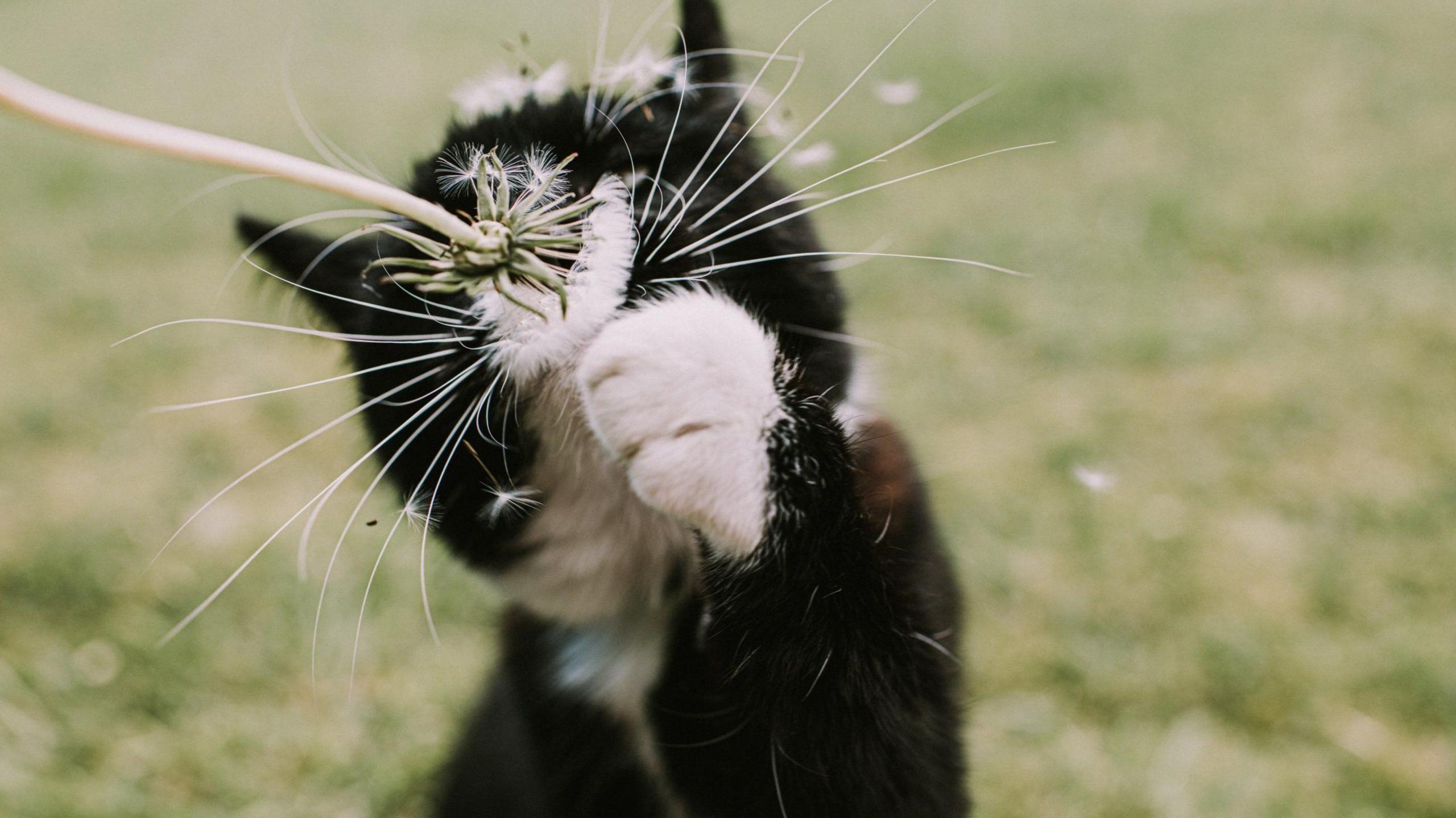Hay fever: Did you know your pets can suffer too?

- Published
Hay fever is an allergic reaction to pollen. It can be triggered by allergens in the air around us such as grass, tree, plant pollen and mould.
It may be surprising to hear that it is not just humans that are affected by hay fever, but some pets including cats and dogs can be plagued by this allergy as well.
Pets suffering from hay fever show different signs and symptoms to humans.
Their seasonal symptoms may include tiredness (especially when the pollen count is high), shaking their head, reddened skin and excessive scratching or licking of paws.
Did you know your pets can get hay fever?
Ways to help
If you suspect your pet has hay fever, it is worth taking a trip to the vet to rule out any other health problems.
Always speak to your vet before trying home remedies but there are ways you can try to help relieve symptoms.
We spoke to Gemma Renwick, Vet Nurse at the People's Dispensary for Sick Animals (PDSA), who provided a few top tips for helping your pet with hay fever symptoms:
Make sure your pet’s bedding is washed and vacuumed weekly as this will help remove any pollen that has built up from their trips outside during the week.
Your vet may recommend medication to help your pet feel more comfortable during the summer months.
Although it may be tempting to create a home remedy when your pet is in pain, never give them medication without a prescription. This can be dangerous in the wrong doses, or for certain species.
Also consider adding a skin supplement or oil to your pet's food.
When planning to venture outside, first check the pollen forecast for the day and plan your walks before dawn or early in the evening as the pollen count may be lower at these times.
While we know dogs love to play in the grass, this can lead to their fur becoming covered in pollen, causing hours of misery later in the day. Keeping your dog on a lead near grass and wiping their fur, particularly their paws and muzzle, after every walk will help remove any tiny traces of pollen.
For more expert PDSA advice on how to protect your pets from pollen, visit the .
And remember you can stay up to date with the latest weather and pollen forecast on the Βι¶ΉΤΌΕΔ Weather website or on our app.
- Published22 March
- Published21 April 2022